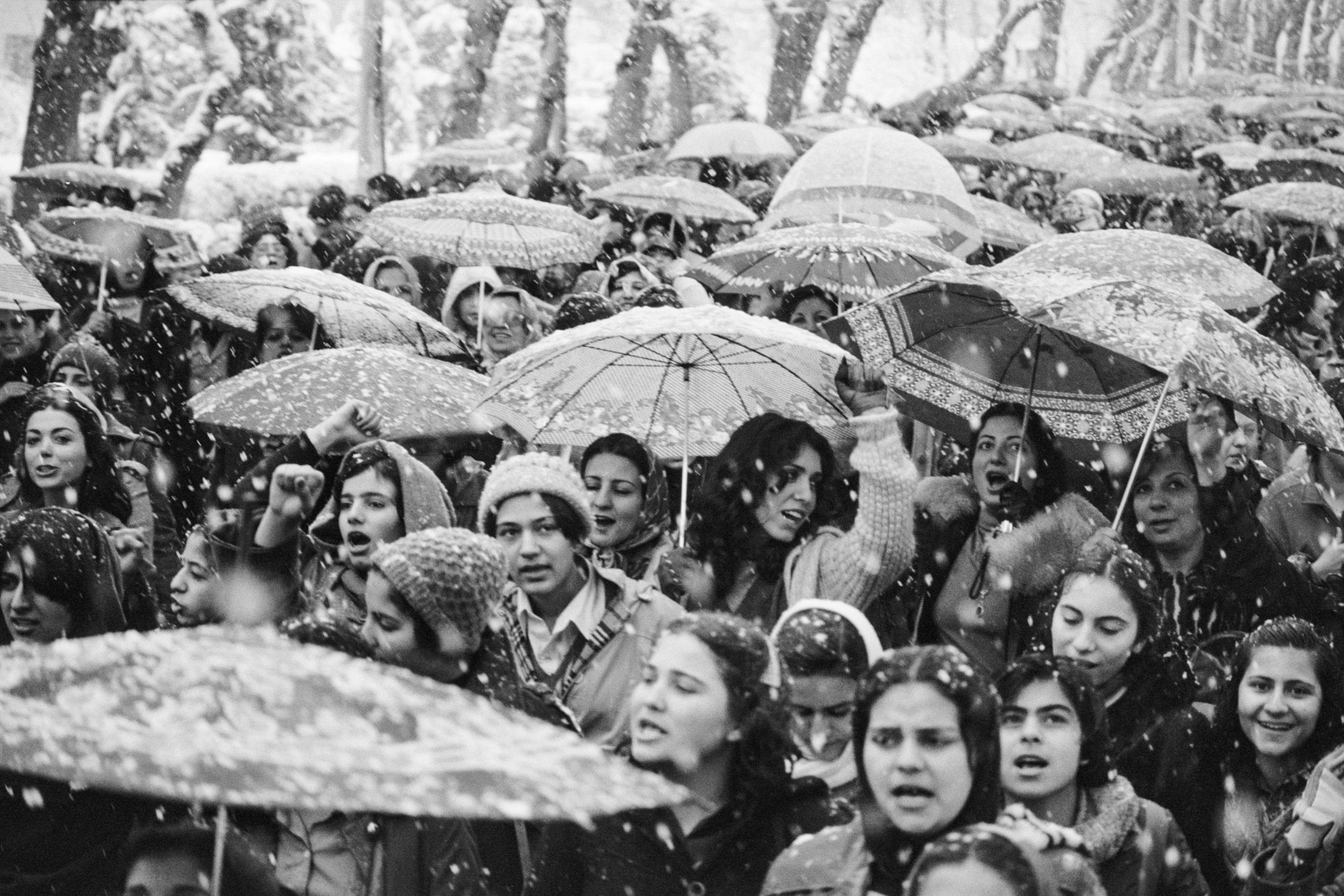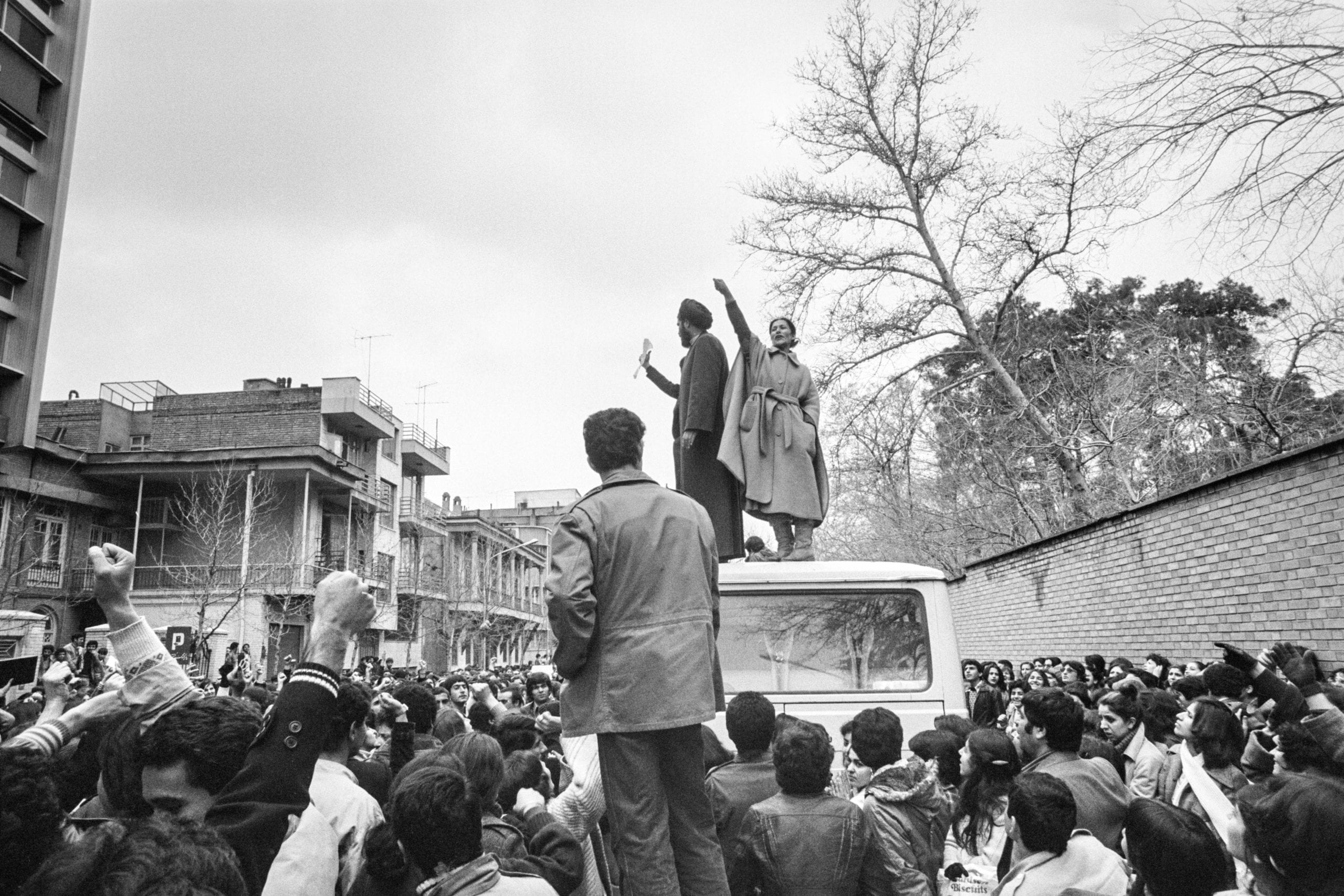On 7th May 1979 the Iranian newspapers announced a new law had been passed stating all women must wear a headscarf in public.
The following day, more than 100,000 women took to the streets to protest.
Photographer Hengameh Golestan was there to capture it. “They were demanding the freedom of choice,” Golestan says.
“It wasn’t a protest against religion or beliefs, in fact many religious women joined the protest, this was strictly about women’s rights, it was all about having the option.”
Despite these demonstrations, the law remained, and newspapers declined to publish Golestan’s pictures.
One of only a handful of female photographers working in Iran at the time, Golestan had started taking photographs seven years earlier, at the age of 18.
She was inspired by her husband, the late Kaveh Golestan, who died in 2003 after while working in Iraq for the BBC. “I started as his assistant and then continued from there,” she says.
“In the days before selfies, Photoshop and citizen journalism, photos were vital, a visual document that might otherwise not be seen.
“For me, taking a picture was a way to document events that were happening around me, no matter what my opinion was of the event, the camera was still objective at that point, it was just recording the truth.”
Her photographs from the 8th March protests, which have still never been shown in Iran, are on display at The Showroom Gallery in London until 27th September, alongside a raft of other pictures from the Iranian Revolution, all of which emphasise the role women played.
“Women were present at all stages of the revolution from the very start – from demonstrations to the American embassy hostage-taking,” Golestan says.
The idea for the exhibition came about in 2010, when Golestan showed her work at a women’s festival in Aleppo, Syria.
“I chose this series of women in a 1979 street demonstration because I thought that, after 35 years, the images have become history and show a different face of Iranian women.
“I later became acquainted with Azadeh Fatehrad in London and learned about the research she was doing on Iranian women for her Phd studies at the Royal College of Art,” she explains.
“I showed her a postcard from the Aleppo exhibition of a group of nurses demonstrating in Tehran. The image stirred such emotion in her that she decided to base her research on it.”
As the show’s co-curator, Fatehrad has also been involved in putting together a programme of discussions, a symposium, a reading group, and workshops for local young women to challenge perceptions of Iran’s history and present.
“I feel that we are at a stage in global relations between the West and Iran where we need open dialogue, not only politically but culturally and socially,” Golestan says. “I hope that the exhibition will help in breaking down some of the stereotypes that exist, replacing them with a more three-dimensional model, based in reality.”
Witness 1979 runs until 27 September at Showroom Gallery in London. Find more information here.
Find more of Hengameh’s work here.



